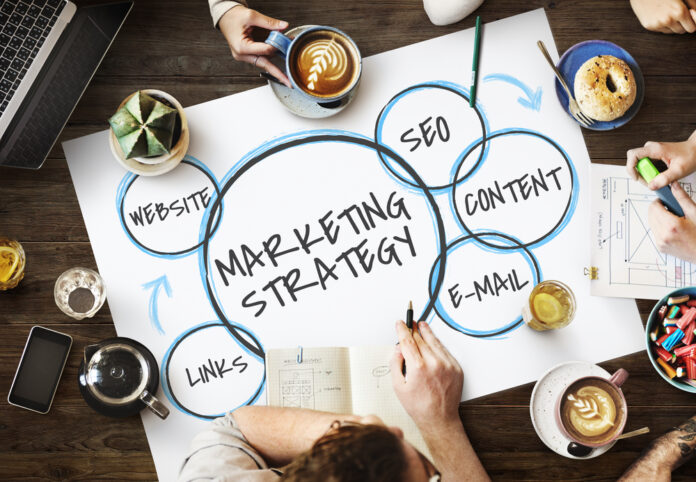Many people dream of inventing something that will make them rich and famous. But, before you start designing prototypes and filing patents, it’s important to remember that invention should always be driven by a sense of purpose. In this blog post, we’ll discuss strategies for developing and marketing purpose-driven products that will not only make you money but will also make a positive impact on the world.
Starting with Purpose

Invention should always start with a clear purpose or problem to solve. It’s important to identify a need in the market that it can fulfill. For example, the invention of the Fitbit was driven by a desire to help people track their fitness goals and improve their overall health. By starting with a clear purpose, you’ll be able to focus your efforts and ensure that your invention will actually solve a problem that people care about.
But, how do you identify a purpose? One way is to brainstorm with friends and family. Talk about the problems you encounter in your daily life and see if there are any inventions that could solve those problems. You can also conduct market research to identify needs in the market that are not currently being met. By gathering information about your potential customers, you’ll be able to ensure that your invention is designed to meet their needs.
Another helpful resource for inventors are the companies that provide assistance to inventors with the patent process, prototyping, and marketing. They can also help inventors identify market needs and develop their ideas into a tangible product. By partnering with such a company, inventors can receive valuable guidance and support throughout the entire invention process, from ideation to commercialization. Are you already hooked? Then read here more and keep learning until you reach your dream.
Development

Once you’ve identified a purpose, it’s time to start developing your invention. This process can be broken down into three stages: ideation, prototyping, and testing.
Ideation involves generating as many ideas as possible. This is where you’ll brainstorm with your team or alone to come up with creative solutions to the problem you’re trying to solve. During this stage, it’s important to use design thinking, which involves empathizing with your potential customers and focusing on their needs.
Prototyping is the stage where you’ll start to bring your ideas to life. You’ll create physical or digital models of your invention to test its functionality and get feedback from potential customers. It’s important to involve your potential customers in the prototyping stage to ensure that your invention meets their needs.
Testing is the stage where you’ll gather feedback and iterate on your design. You’ll want to test your invention in different environments and with different users to ensure that it’s functional and meets the needs of your target market. By testing and iterating, you’ll be able to create a product that is not only purpose-driven but also user-friendly.
Marketing strategies

When it comes to marketing, it’s important to have a clear understanding of the channels and methods that will be most effective for your invention. Social media can be a great way to reach a wide audience, but it’s not the only option. Depending on your target market, traditional marketing methods like print advertisements, radio spots, or even direct mail campaigns may be more effective. In addition to understanding your target market, it’s also important to understand the competition. What other products are out there that are similar to yours?
What makes your invention unique and different? By identifying your unique selling proposition (USP), you’ll be able to create messaging that sets your invention apart from the competition and resonates with potential customers. When it comes to marketing your invention, working with a professional marketing firm can be incredibly beneficial.
They have the expertise and experience to help you create a compelling brand story, identify your target market, and develop a marketing plan that will help your invention succeed. Plus, they can provide valuable guidance and support as you navigate the process of bringing your invention to market.
Inventing with purpose and developing a strong marketing strategy are both essential for the success. By identifying a clear purpose and conducting market research to understand your target audience, you can create an invention that truly meets the needs of your potential customers. And by developing a compelling brand story and effective marketing plan, you can ensure that it gets the attention and recognition it deserves. With the right approach and support, you can turn your invention into a success story and make a positive impact on the world.
Market launch

Once you’ve developed and marketed your invention, it’s time to bring it to market. This involves manufacturing, distribution, and sales. Depending on the nature of your invention, you may need to partner with manufacturers, distributors, or retailers to get your product in front of customers.
When selecting partners, it’s important to choose those who align with your purpose and values. You’ll want to work with partners who share your vision for making a positive impact on the world. By doing so, you’ll be able to ensure that your invention is being manufactured, distributed, and sold in a way that aligns with your purpose.
It’s also important to consider the environmental and social impact of your invention. Can it be produced sustainably? Are the materials used in manufacturing environmentally friendly? By considering these factors, you’ll be able to create a product that not only solves a problem but also has a positive impact on the world.
Conclusion
Inventing with purpose is not only a way to make money but also a way to make a positive impact on the world. By starting with a clear purpose and identifying a need in the market, you’ll be able to create a purpose-driven product that meets the needs of your target market.
By using design thinking and involving potential customers in the ideation, prototyping, and testing stages, you’ll be able to create a product that is user-friendly and effective. When marketing, it’s important to create a compelling brand story that focuses on the purpose behind your invention. By bringing your invention to market in a way that aligns with your purpose and values, you’ll be able to ensure that it has a positive impact on the world.








